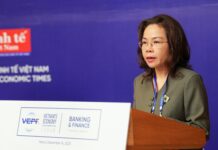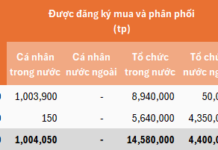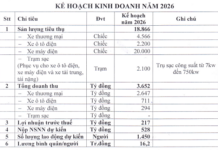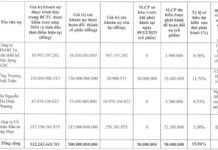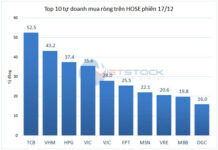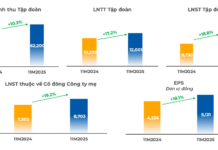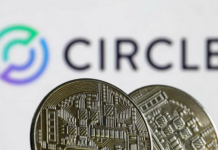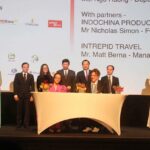On September 23, Nutifood Nutrition Food JSC announced the completion of the acquisition of 51% of Kido Frozen Food JSC’s shares, thereby gaining control of the company that owns two famous ice cream brands, Merino and Celano.
Previously, in 2023, Kido Group transferred more than 24% of Kido Foods’ capital to its partner for VND 1,069 billion, equivalent to a company valuation of approximately VND 4,450 billion ($200 million). Kido Group still holds the remaining 49% stake in Kido Foods.
“This deal allows Nutifood to own a frozen food distribution system with hundreds of thousands of ice cream freezers covering the country, from traditional retail stores, modern retail outlets to restaurants, hotels, and entertainment venues… This is the necessary foundation for Nutifood to quickly and effectively expand into the frozen food industry,” said Mr. Tran Bao Minh, Vice Chairman of Nutifood’s Board of Directors, sharing the reason for investing in Kido Foods.
Acquiring a $20 million ice cream factory from Unilever
Looking back at the history of the ice cream market in Vietnam, one of the earliest entrants was foreign giant Unilever.
In 1997, the FMCG (fast-moving consumer goods) conglomerate invested $22 million to establish the Wall’s factory in Ho Chi Minh City, which was the largest ice cream factory in Vietnam at that time and was considered the most modern in Southeast Asia. The factory had a total area of 23,728 square meters and a capacity of 9 million liters per year.
However, Unilever did not achieve the expected growth as its ice cream products were not affordable for most Vietnamese consumers at that time. Six years later, Unilever decided to exit the ice cream business in Vietnam and sold the Wall’s factory to Kido Group.
“When Unilever wanted to sell Wall’s ice cream, not only KIDO but also many other partners wanted to buy it. But in the end, they chose to sell it to KIDO because we committed to taking responsibility for their employees. We took over without letting anyone go, and only the owner of Wall’s ice cream changed, not the employees. Up to now, many members of the old Wall’s team are still attached to KIDO and are an extremely important part of KIDO,” said Mr. Tran Le Nguyen, CEO of KIDO, in an interview in 2022.
In July 2003, Kido Group established a subsidiary to take over this factory. KIDO Private Enterprise, later renamed Kido Frozen Food JSC, was officially established with a charter capital of VND 30 billion, inheriting all of Unilever’s international standard ice cream processing technology.
The two brands that would generate significant profits for Kido Foods were launched in the following two years. Merino was introduced in 2004, and a year later, in 2005, Celano was launched, targeting the premium segment. Kido Foods’ charter capital also increased to VND 50 billion in 2005. In 2006, the company entered the yogurt market with the Wel Yo brand.
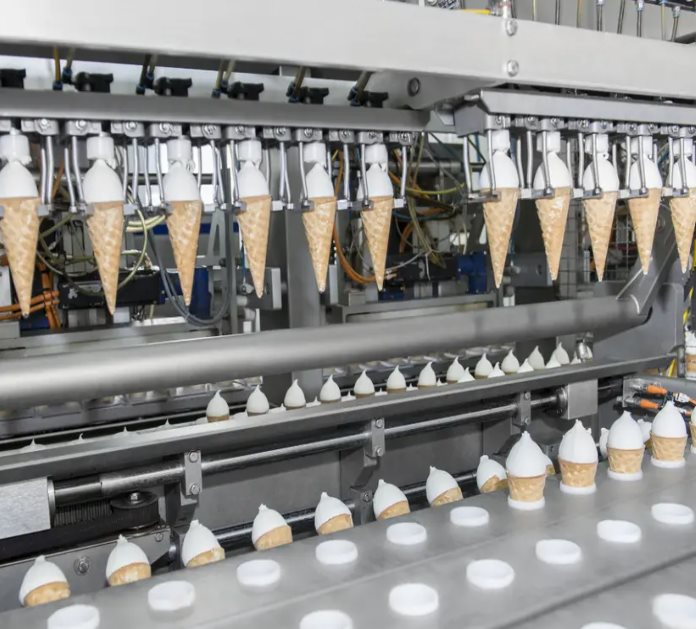
In 2008, right after the non-compete agreement with Kido ended, Unilever’s former Wall’s brand returned to Vietnam. This time, Wall’s products were imported from Thailand instead of being locally produced as before. However, the cold storage requirement led to high transportation costs and inventory issues, so Wall’s only brought about 20 types of ice cream to Vietnam. Due to these problems, Wall’s was at a disadvantage compared to Kido in negotiating with retail outlets, especially traditional trade stores.
In 2011, after two consecutive years of 60% and 39% growth, Kido Foods expanded and invested in a new production line at its Tay Bac Cu Chi factory, doubling and quadrupling its ice cream and yogurt production capacity, respectively.
In 2015, Kido Foods reached a revenue milestone of VND 1,000 billion, and its charter capital increased to VND 400 billion. The capacity of the factory in Tay Bac Cu Chi Industrial Park was no longer sufficient to meet market demand, so in October 2015, Kido Foods began construction of a new factory in VSIP Bac Ninh Industrial Park. A year later, the factory commenced operations, increasing capacity by 170% to quickly meet consumer demand in the North and across the country.
In the first year of taking over the Wall’s factory from Unilever, Kido Foods’ revenue was only VND 40 billion. By 2016, this figure had increased more than 30-fold.
The “king of the ice cream industry” with a dominant market share
According to data released by market research firm Euromonitor in 2017, retail sales of ice cream and dairy desserts in Vietnam were estimated at 26,600 tons, a 7% increase from the previous year, as consumers’ incomes rose and their quality of life improved.
Kido Foods firmly held the leading position in the ice cream and dairy dessert market with a 40.2% market share in 2017, a significant increase from 35.4% in 2015. Vinamilk followed with a 9.1% share, and Unilever ranked third with an 8.4% share. 2017 also marked the year Kido Foods’ shares were listed on the stock exchange.
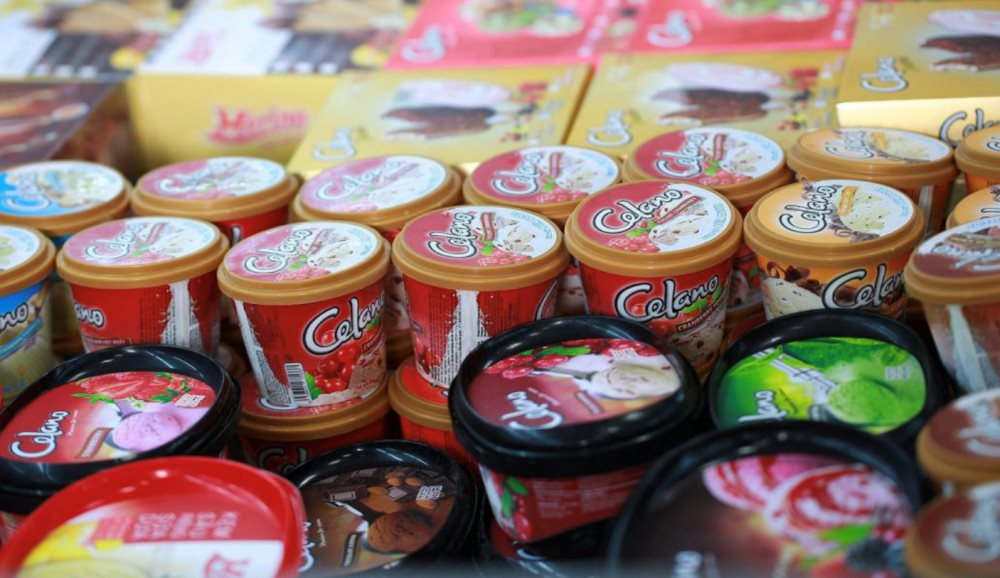
By 2020, Euromonitor’s report indicated that the COVID-19 pandemic negatively impacted the consumption of “to-go ice cream,” or ice cream purchased on impulse while outside. However, “take-home ice cream,” or ice cream bought to be stored and consumed at home, saw an increase in sales as consumers craved more ice cream to relieve stress.
The Vietnamese market remained a competition between Kido, Vinamilk, and Unilever, with these three companies accounting for 64% of the market share. Unilever surpassed Vinamilk to become the second-largest player, with respective market shares of 11.1% and 9.1%.
Meanwhile, Kido continued to widen its lead, capturing a 43.5% market share in 2020. In terms of brands, Merino and Celano also topped the rankings, with respective market shares of 24.8% and 17.4%. Wel Yo also made it to the top 10 with a 1.3% share. The latest data from 2023 shows that Kido Foods further solidified its position as the “king of the ice cream industry,” capturing a 46.7% market share.
According to Kido Group CEO Tran Le Nguyen, their success in the ice cream segment is due to the limited number of companies entering the mid-range and premium ice cream market in Vietnam. The ice cream industry offers relatively high profits in the food sector, but it is challenging and risky due to the need for a large market to reduce costs and the high logistics expenses involved.
“In recent years, we have always been flexible and kept up with consumer trends when launching new products, and as a result, they have sold very well,” said Mr. Tran Le Nguyen in a media interview in 2020.
“Every year, our ice cream segment grows by 20-30%, and in 2021, despite the pandemic, we still achieved growth, although it was minimal,” Mr. Nguyen shared in 2022.
The addition of Kido Foods, with its two highly profitable brands, Merino and Celano, is expected to help Nutifood expand its product ecosystem and better meet the diverse needs of consumers, especially in the youth and adult segments.
“Vingroup Signs MoU with Warner Music Group and Indochina Productions”
On September 25, 2024, Vingroup (HOSE: VIC) inked a memorandum of understanding with two powerhouses in the global music and film industries, Warner Music Group and Indochina Productions. This collaboration not only brings world-renowned music stars to Vietnam but also serves as a launchpad for the country’s tourism and cultural image to reach a global audience of hundreds of millions.









